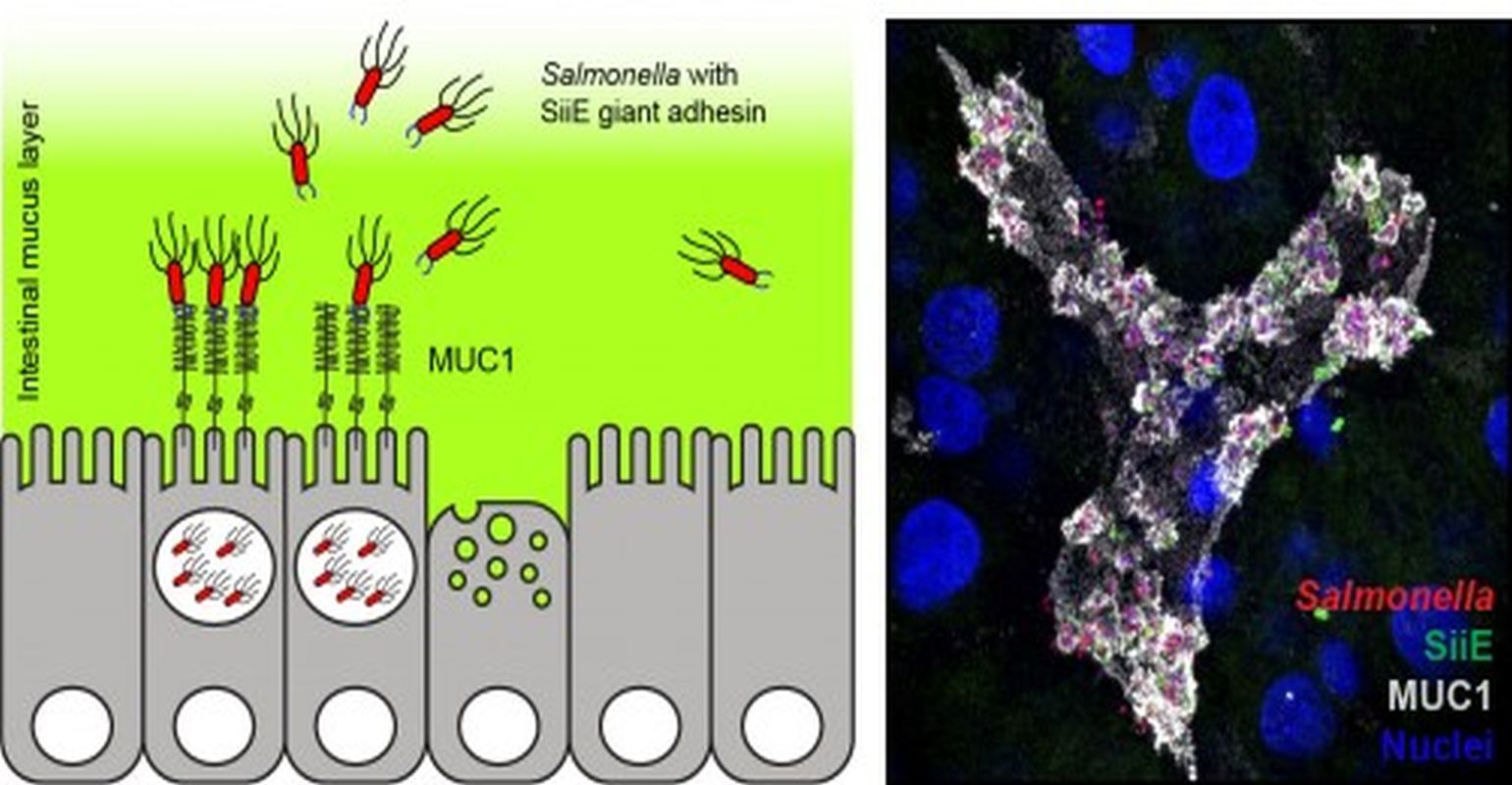Clever Trick Enables Salmonella to Infect Humans

Researchers at Utrecht University have demonstrated how the pathogenic Salmonella bacteria takes advantage of one of the body's defense mechanisms in order to invade cells. This discovery marks an important step toward developing new medicines to prevent Salmonella infections. In the Netherlands, some 50,000 people are infected with Salmonella bacteria each year via raw animal products such as chicken or pork, eggs or dairy products. An article on these findings will be published in the scientific journal PLOS Pathogens on 14 February.
The researchers, led by infection biologist Dr Karen Strijbis, discovered that Salmonella takes advantage of defensive ‘mucins’ in order to invade intestinal cells and start an infection. This mucin, MUC1, is a large protein with many sugars (glycans) and is extremely common in cells in the intestinal tract. According to Strijbis: ‘These results came as a complete surprise, as we had thought that MUC1 would actually offer protection against a Salmonella infection.’
"By using a clever trick, the Salmonella bacteria have found a way to take advantage of one of the body's defensive mechanisms in order to cause an infection," Strijbis explains. Ordinarily, the mucus layer in the intestines represents an important line of defense against bacterial bowel infections such as Salmonella. This mucus layer consists of specialised proteins known as mucins, which form a barrier that bacteria are unable to penetrate. This prevents infections from taking hold in the body. The researchers have now shown that the bacteria use a ‘sticky’ protein known as an adhesin with 53 adhesion receptors (SiiE) which attaches to the plentiful sugars on MUC1 like a zipper. By using SiiE to stick to MUC1, Salmonella is able to bypass the defences at the surface of intestinal cells and successfully invade the cells.
A Salmonella infection in the bowels causes severe diarrhoea lasting three to seven days and may also lead to more serious forms of illness such as typhoid fever. In this latest discovery, the researchers see possibilities for the future: "This new knowledge will enable us to come up with ways to prevent Salmonella infections."
The scientific article was published in PLOS Pathogens on Feb. 14, 2019.
Source: Utrecht University